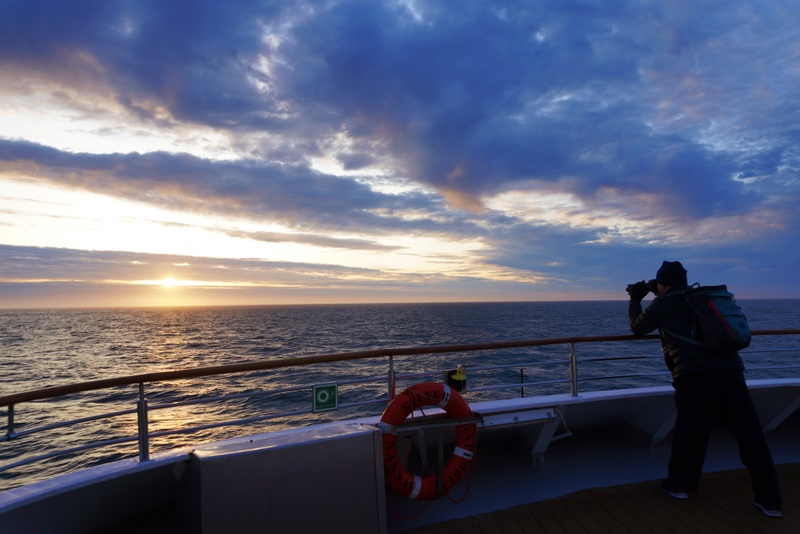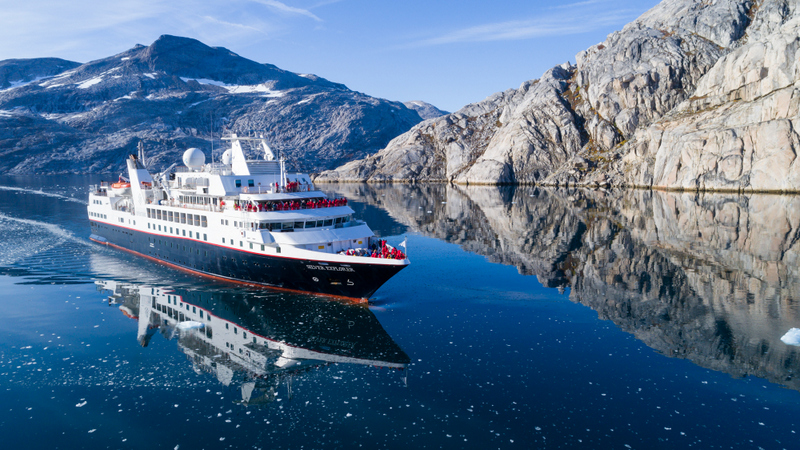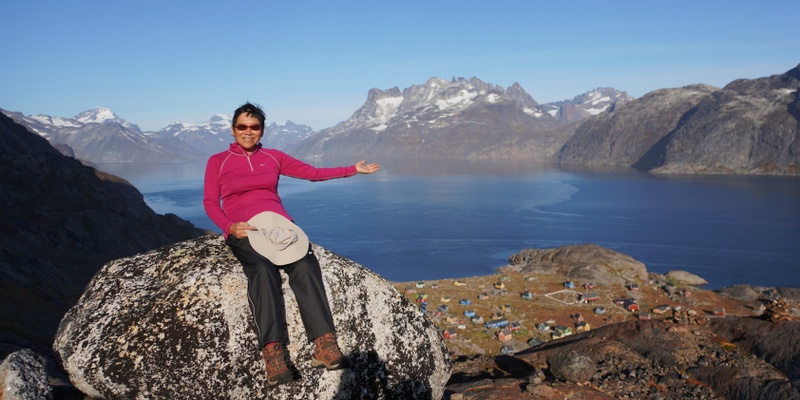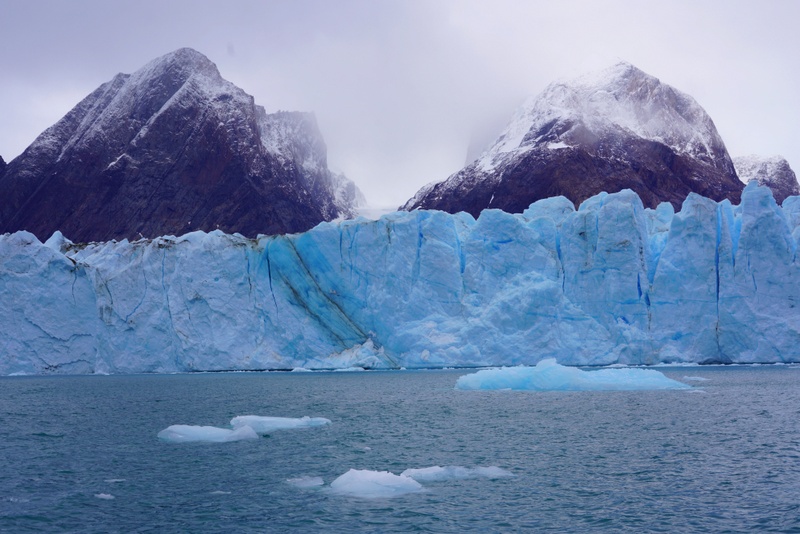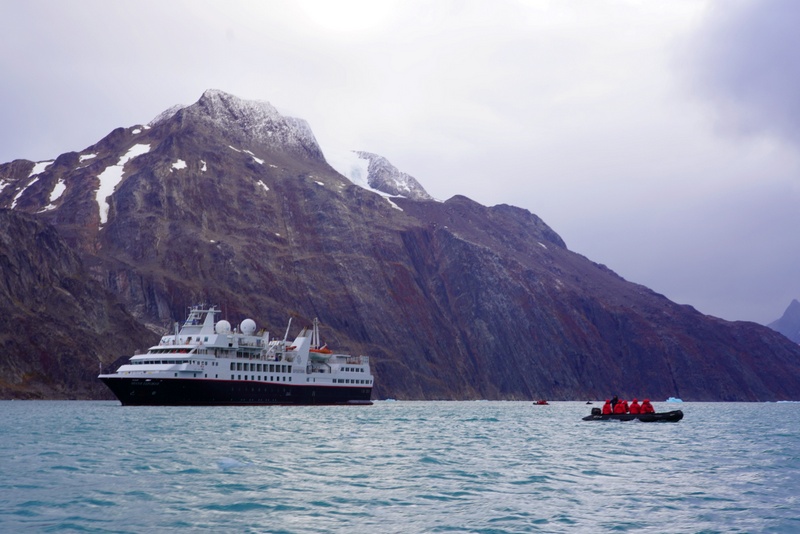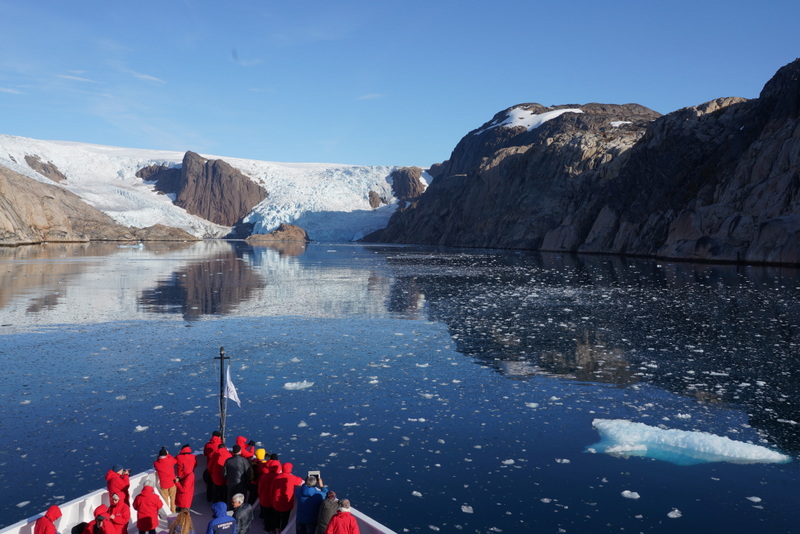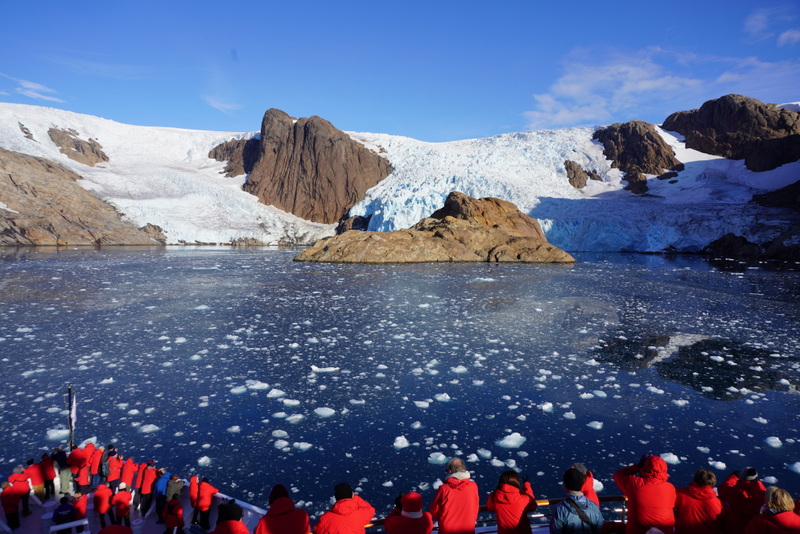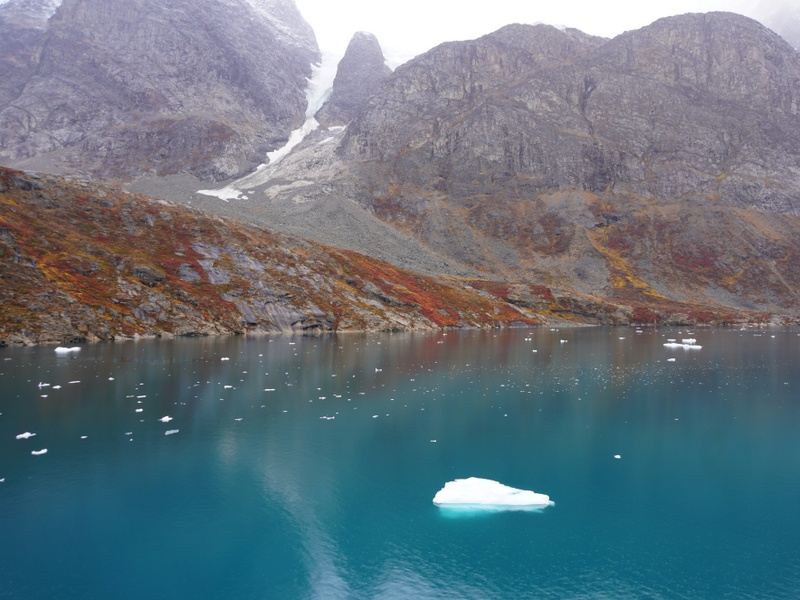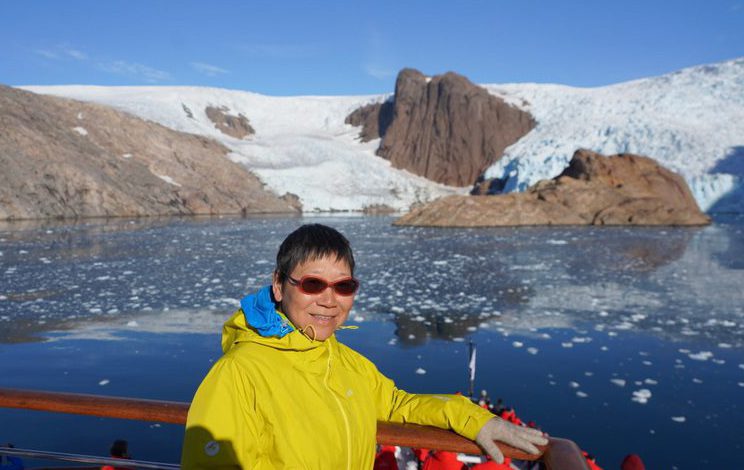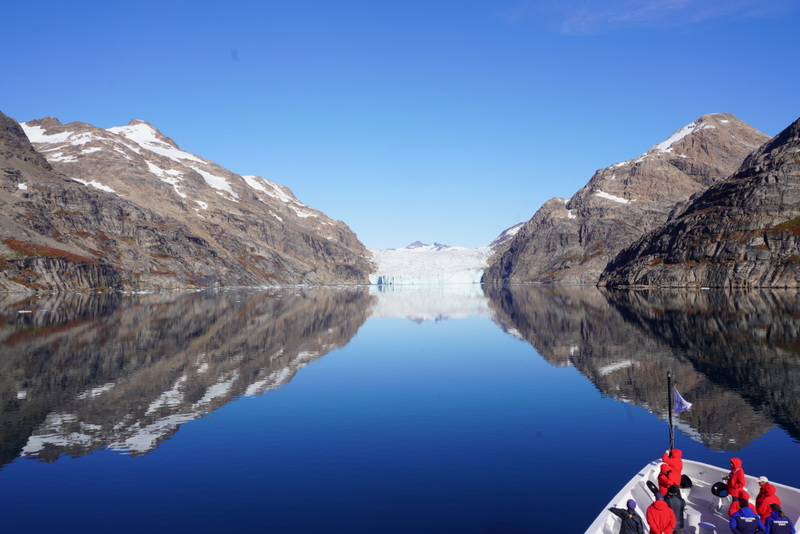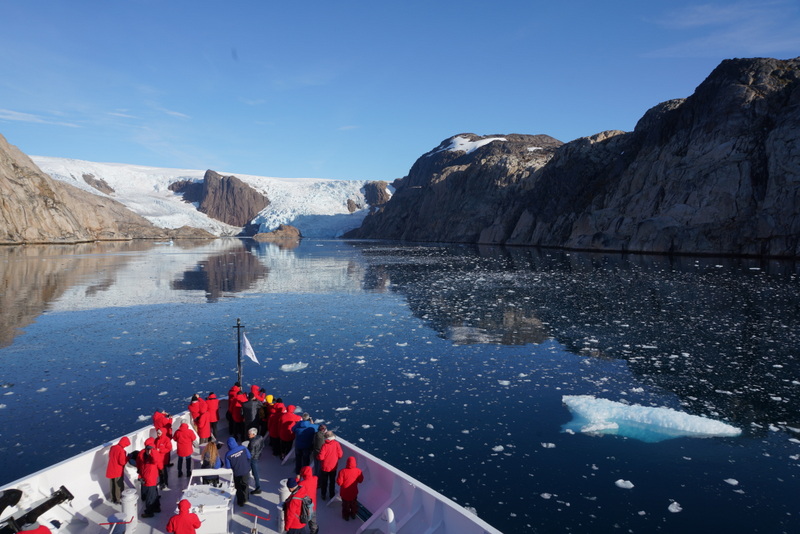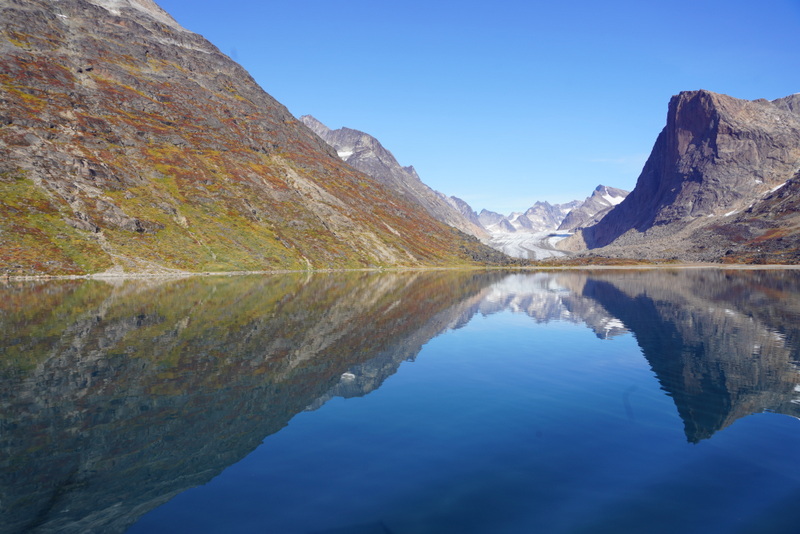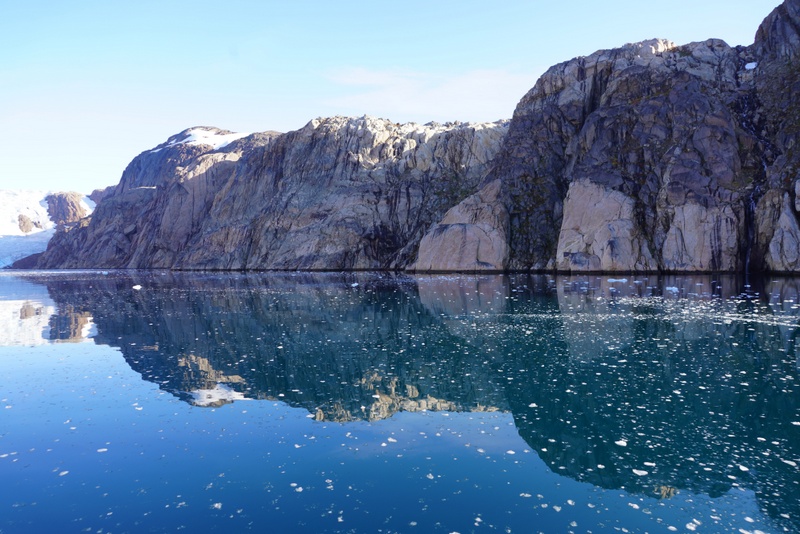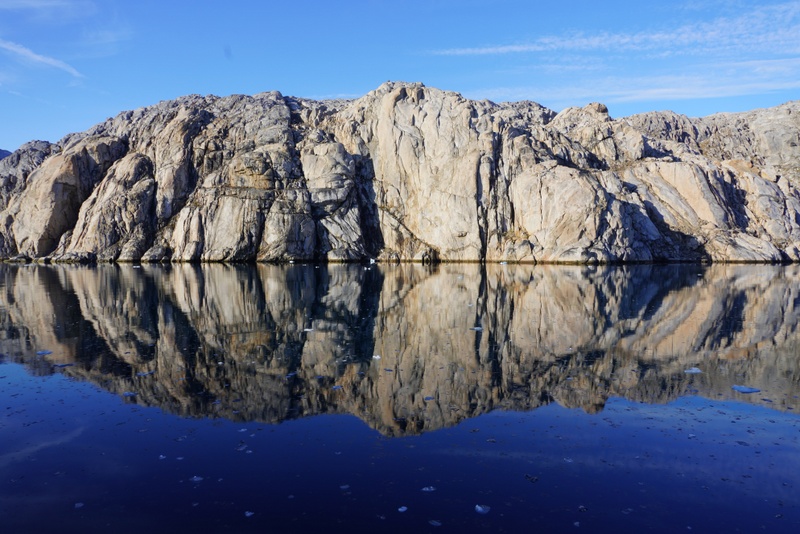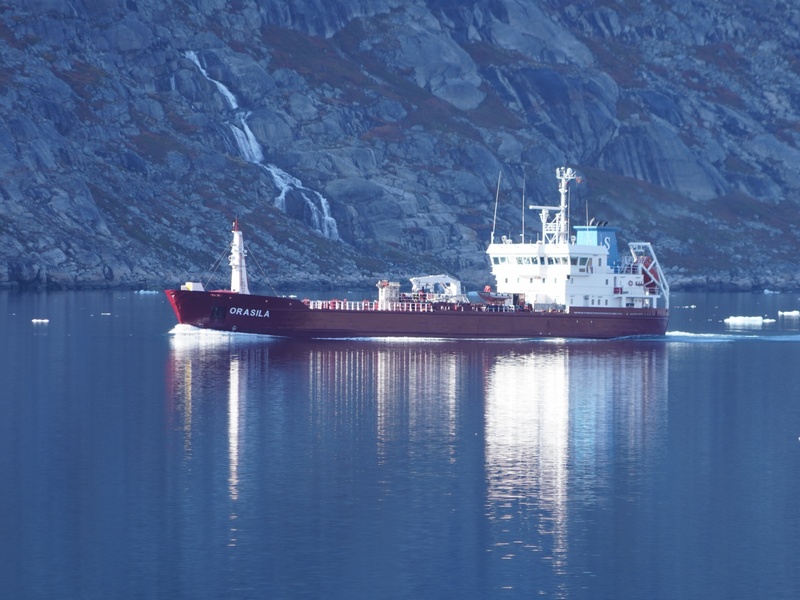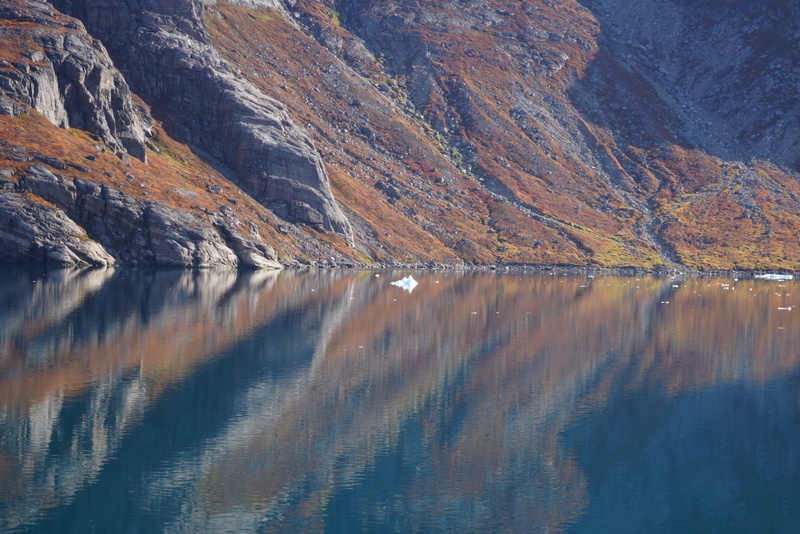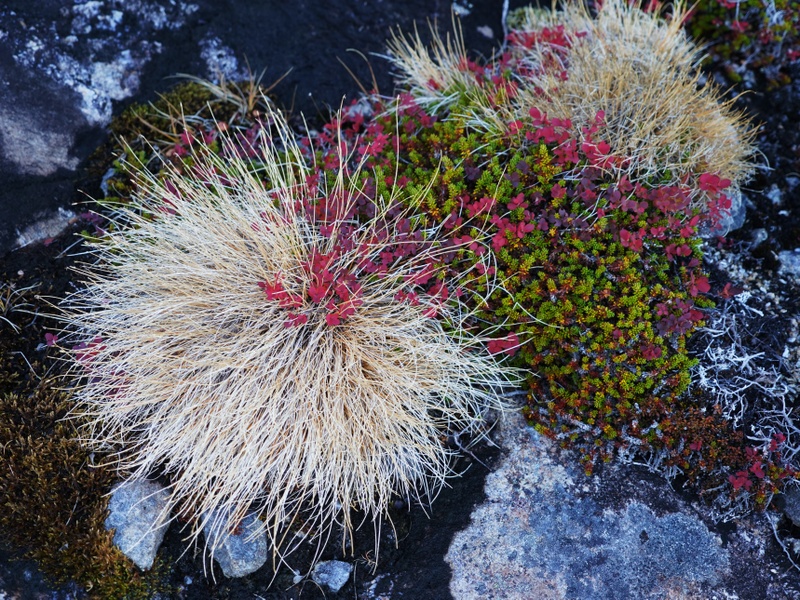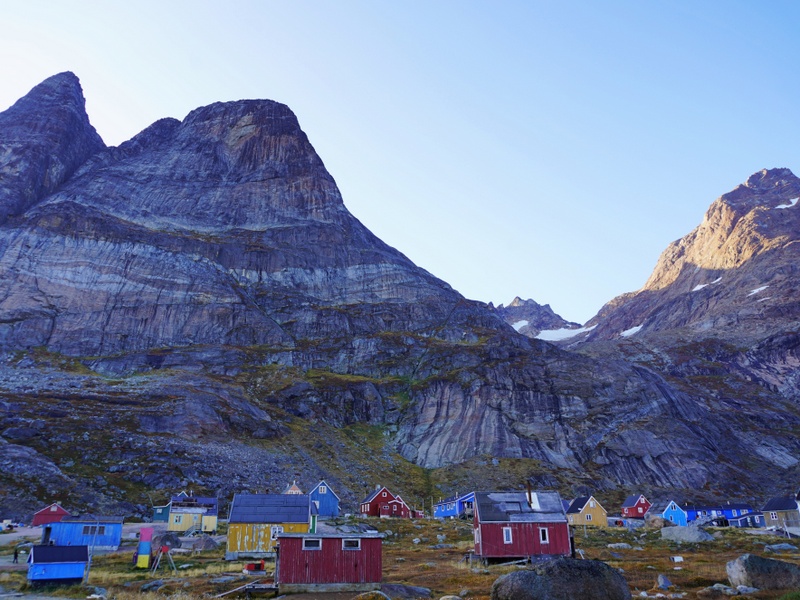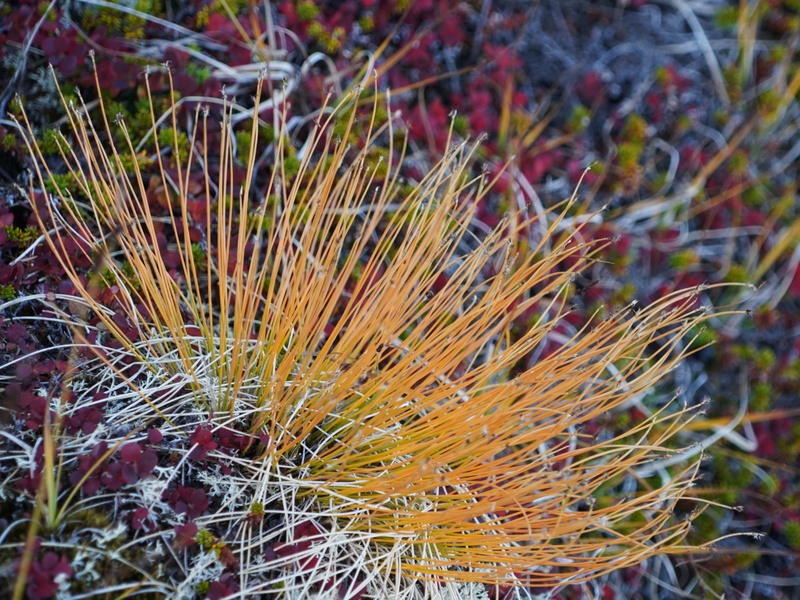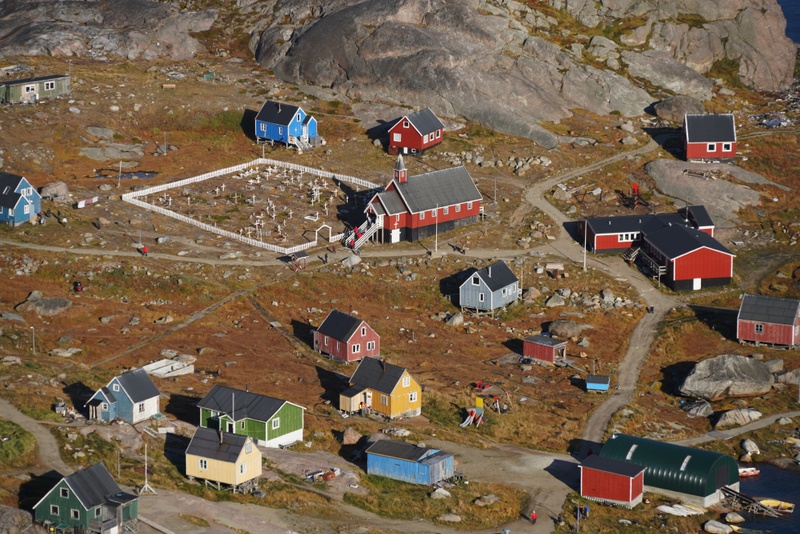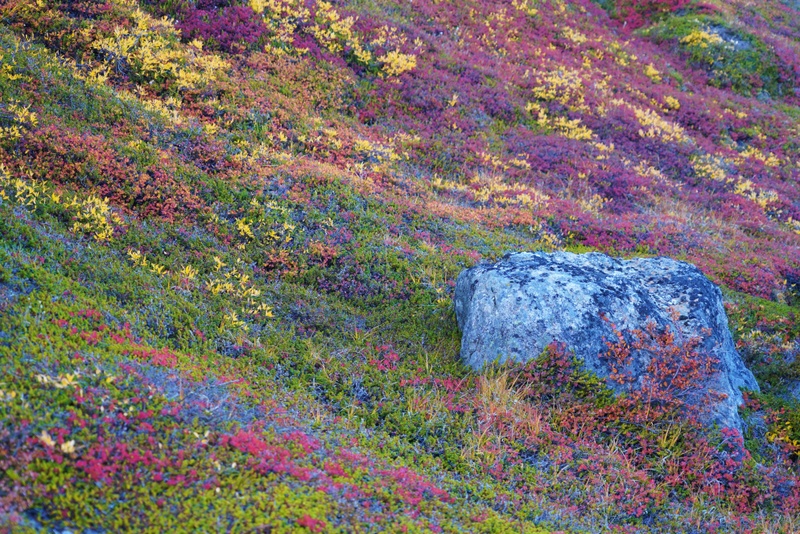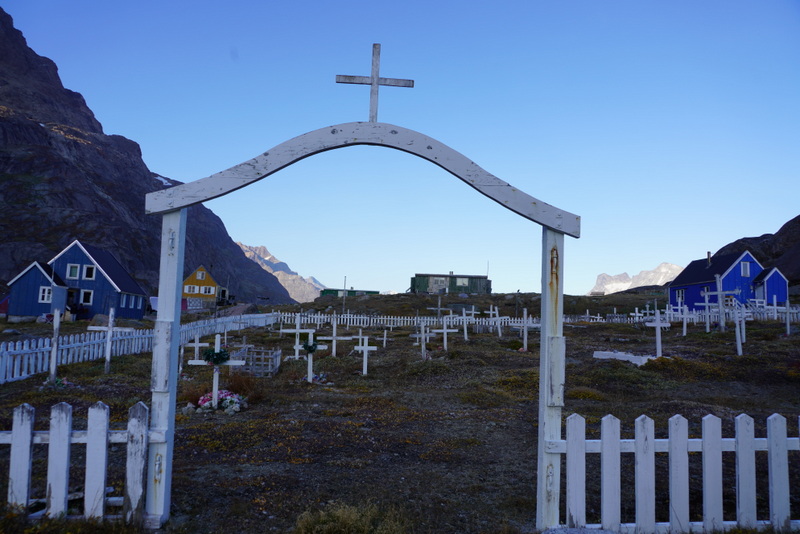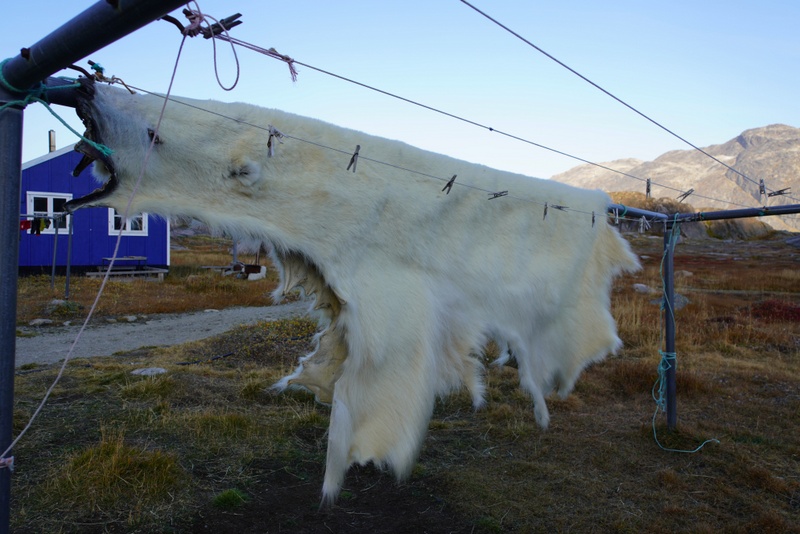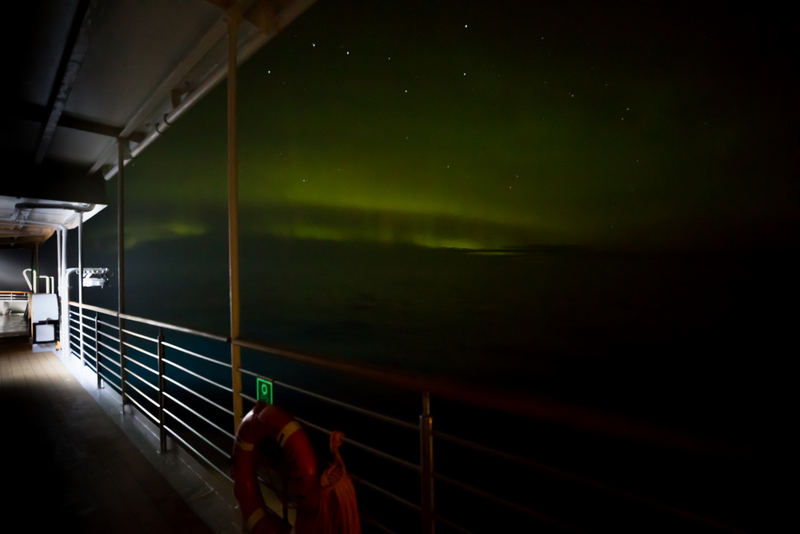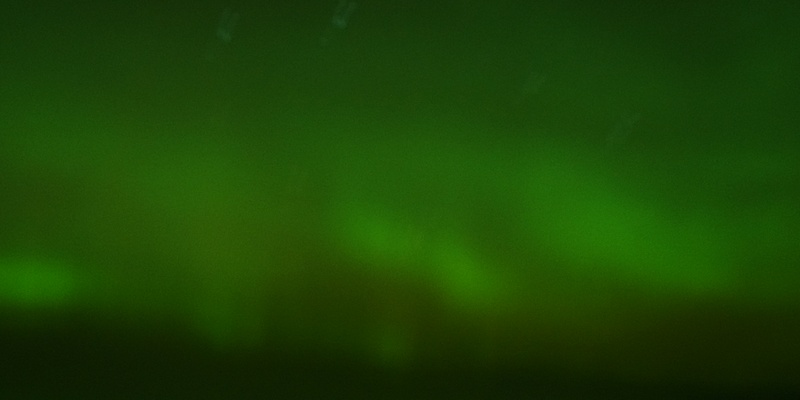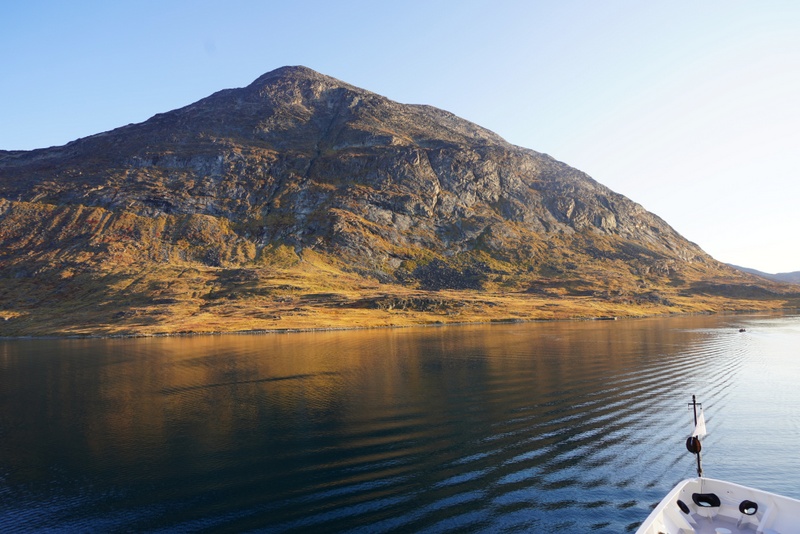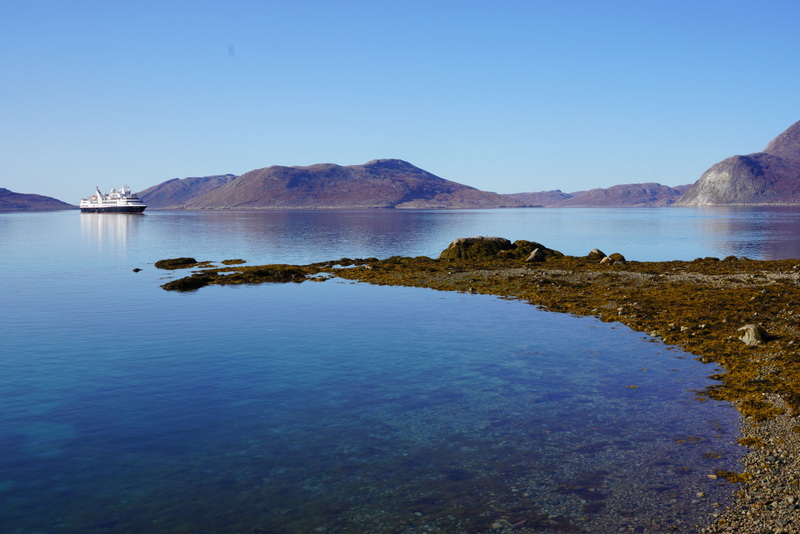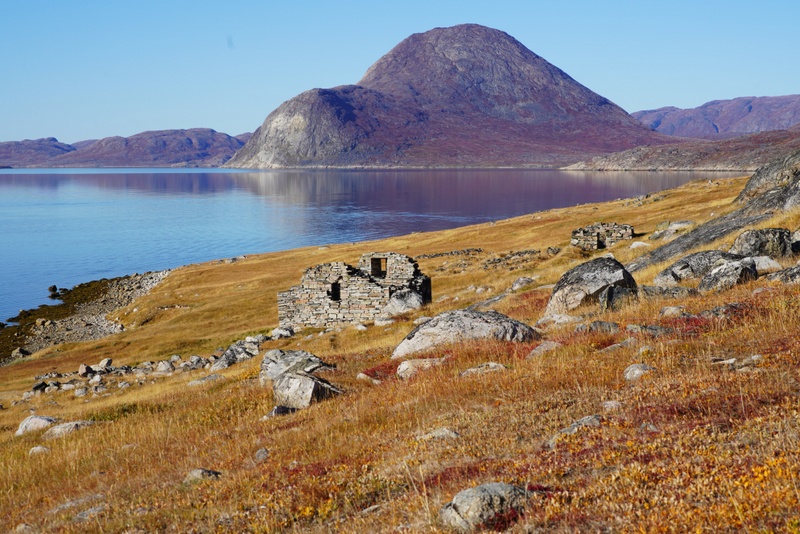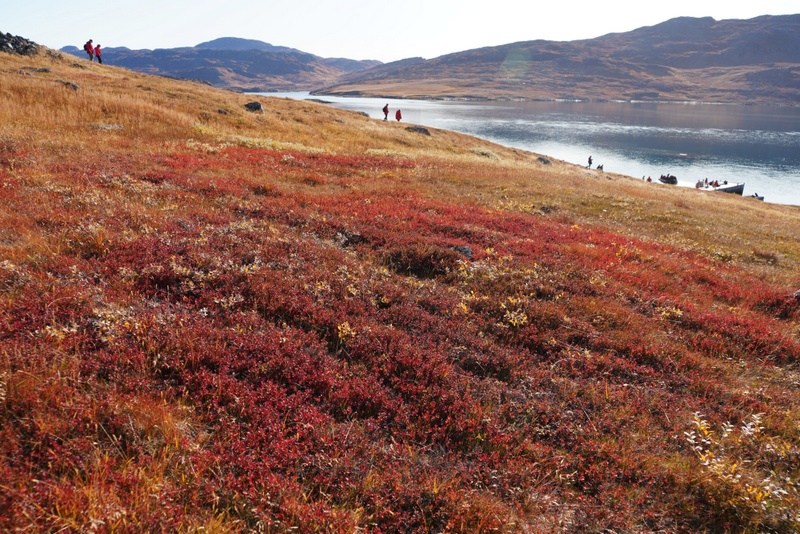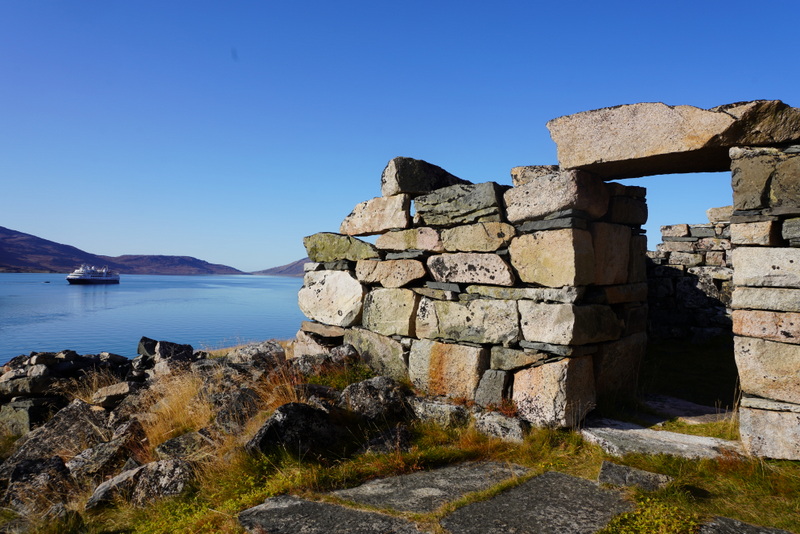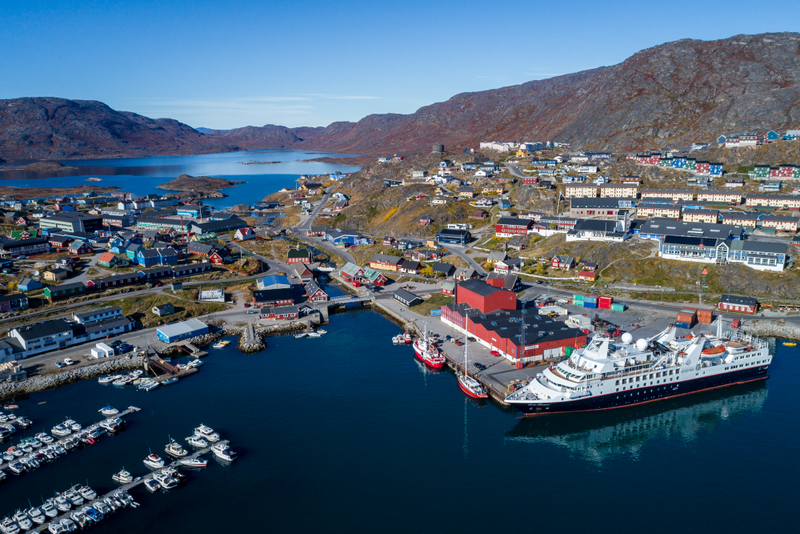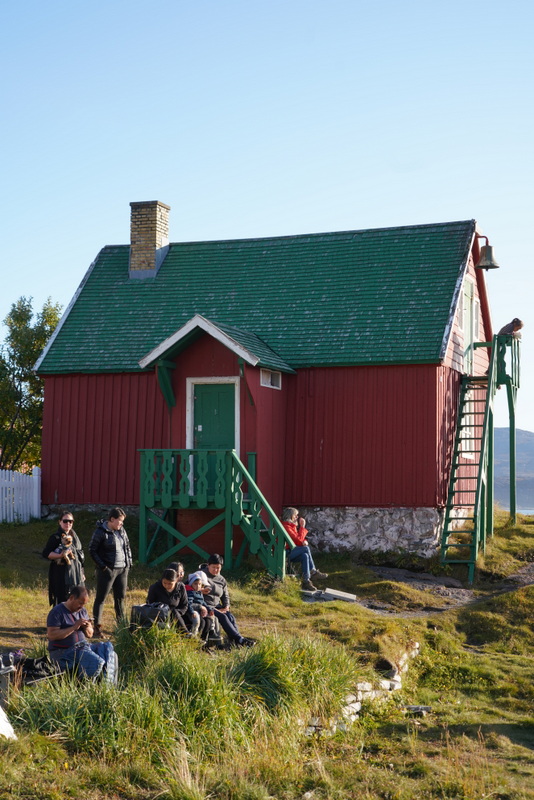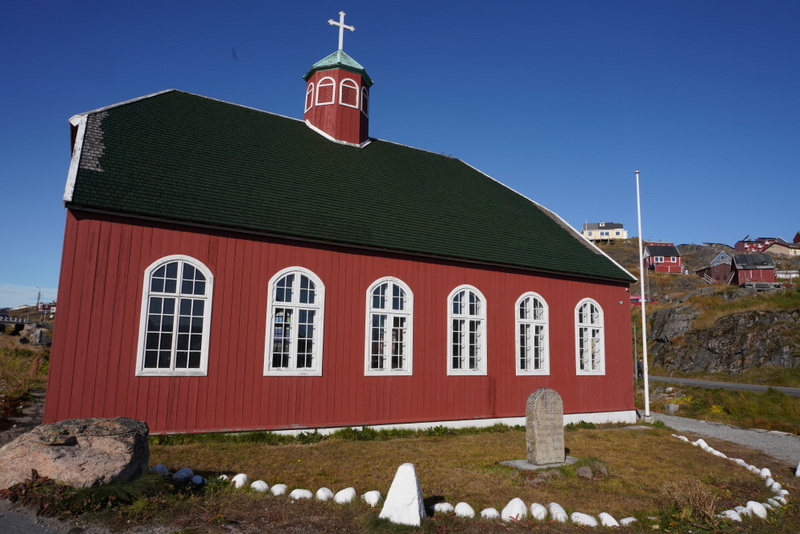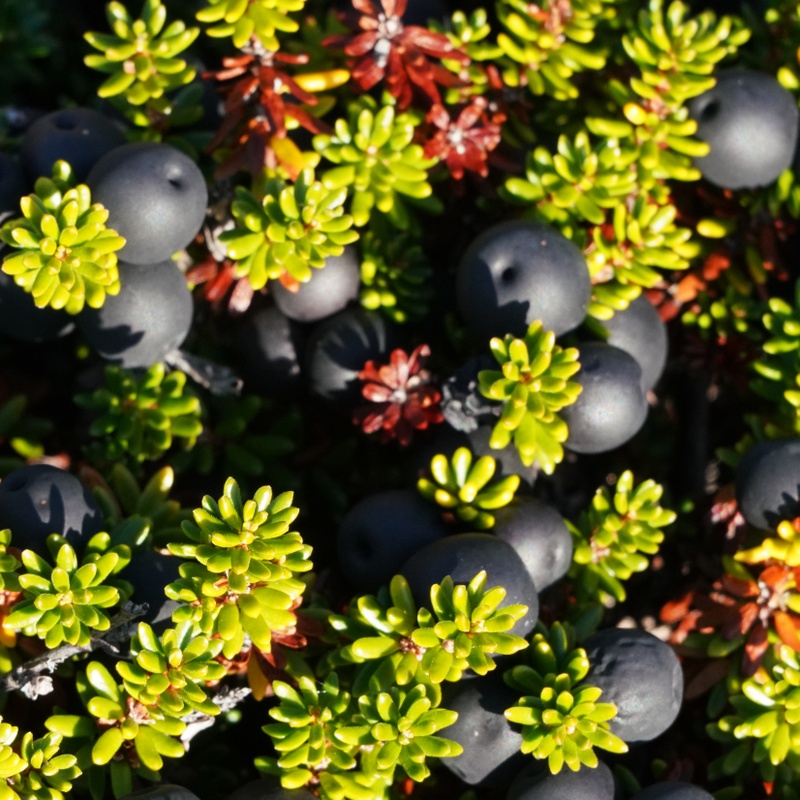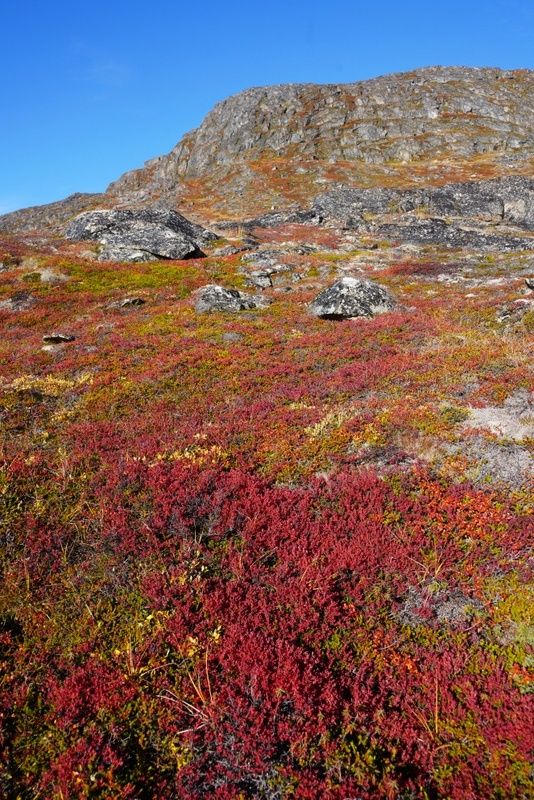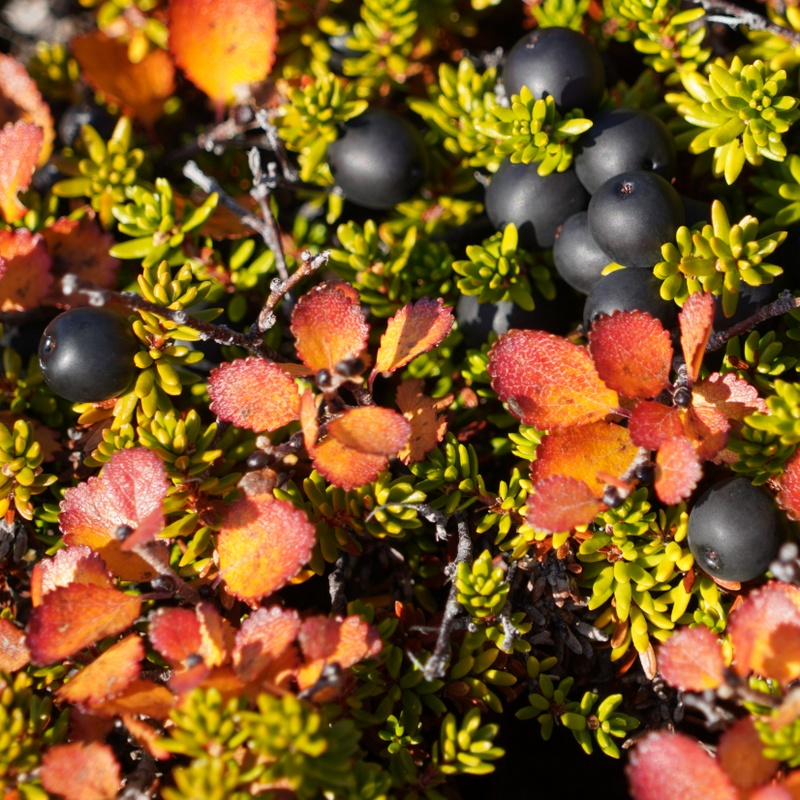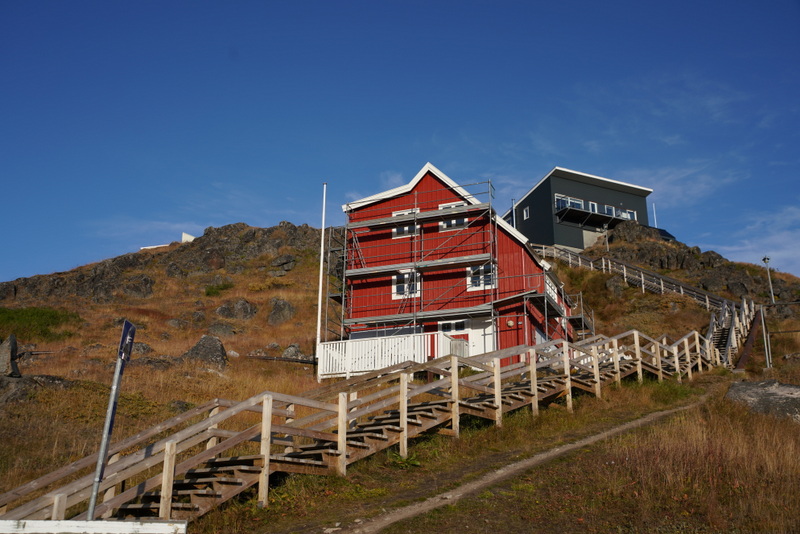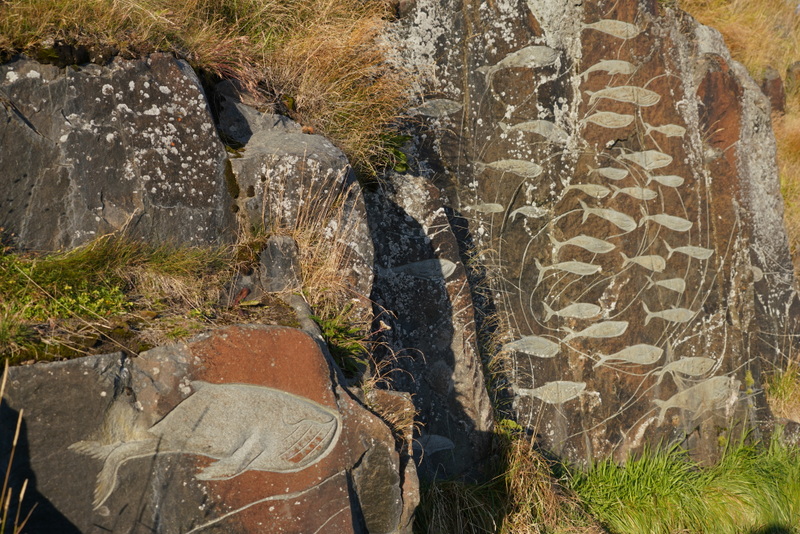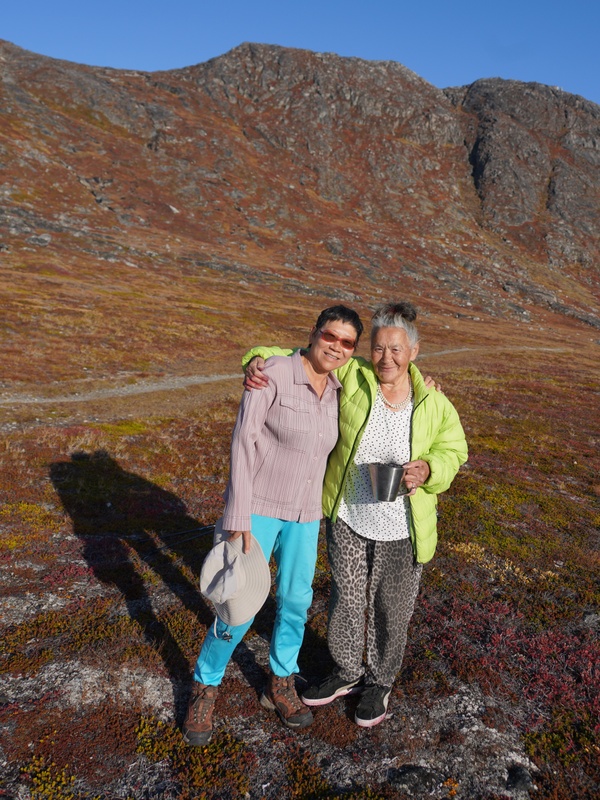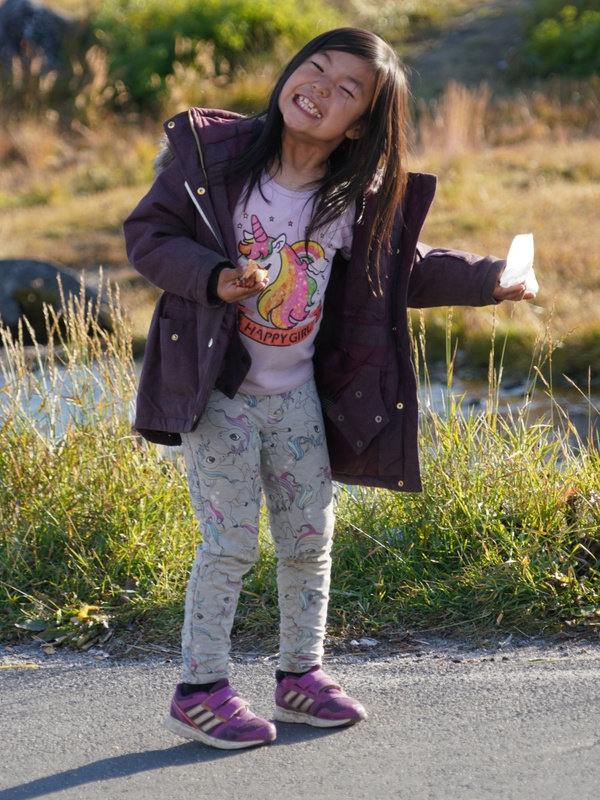Greenland Fjord, Ruins & Communities
Day 5 Sept 24 Tuesday: Skjoldungen Fjord
I indeed got up early and was on the deck to watch the ship approaching the fjord with the Skjoldungen Island on the portside. The weather was not brilliant: it was cloudy and moody. We anyway saw snow-caps, prominent peaks, glaciers icebergs and nunataks (exposed rocks not covered with ice).
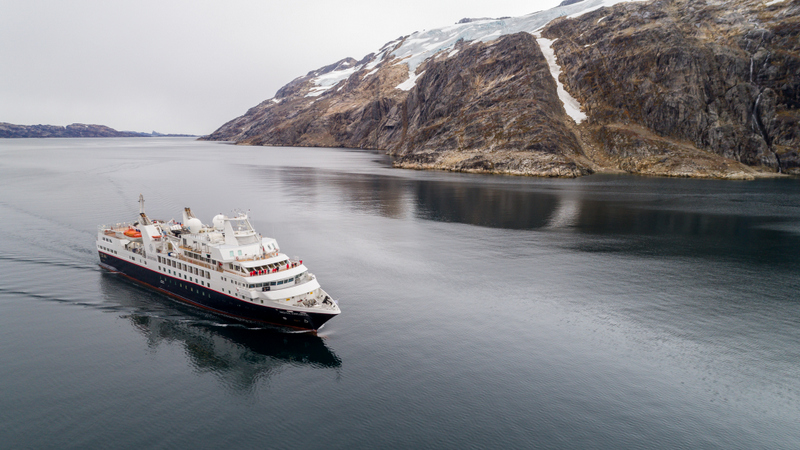
Entering Skjoldungen Fjord
Danny arranged a zodiac cruise. Passengers were divided into four groups (red, yellow, blue and green). Kylie and I were in the Red Group and we were the first group to take the cruise which lasted for an hour and a half. We got fairly close to the glacier which might be around 1.5 – 2 km wide and over 100m high (it is only my guesstimate!). It was cold though.
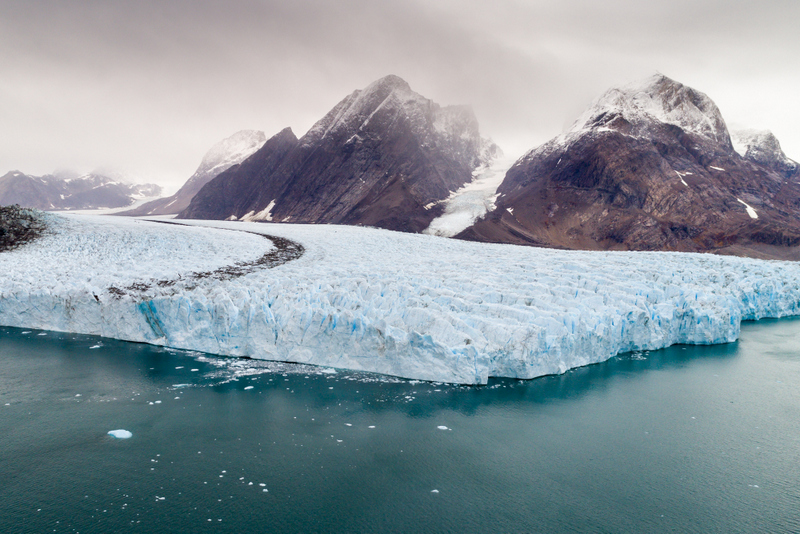
When we returned to the ship, the Blue and Green groups went off. The sky looked grey now. But it stayed dry. While they were out, most of us remained on deck to watch wildlife and admire the magnificent scenery.
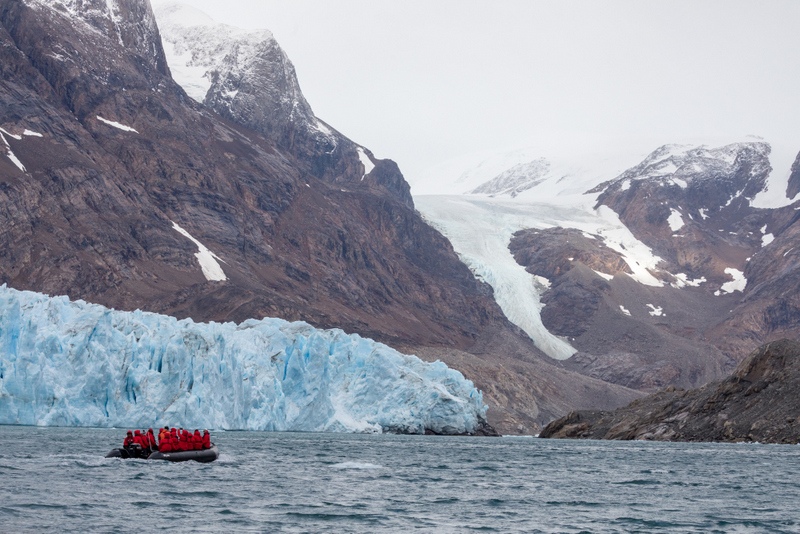
When everyone was on board again, the ship moved on till we completed circumnavigating the island.
The weather improved after lunch. I enjoyed staying on deck to watch the ship sailing through the picturesque and beautiful fjord.
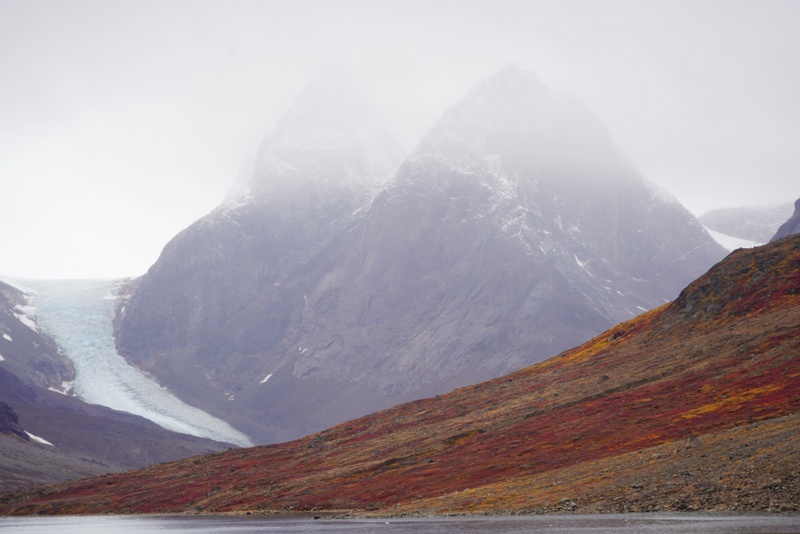
Whenever we had nothing better to do in the afternoons, Kylie and I would drop in the Panoramic Lounge on Deck 5 for afternoon/high tea served between 4 and 5 pm. The scone and cakes are nice. We have to be careful and refrain from over-eating.
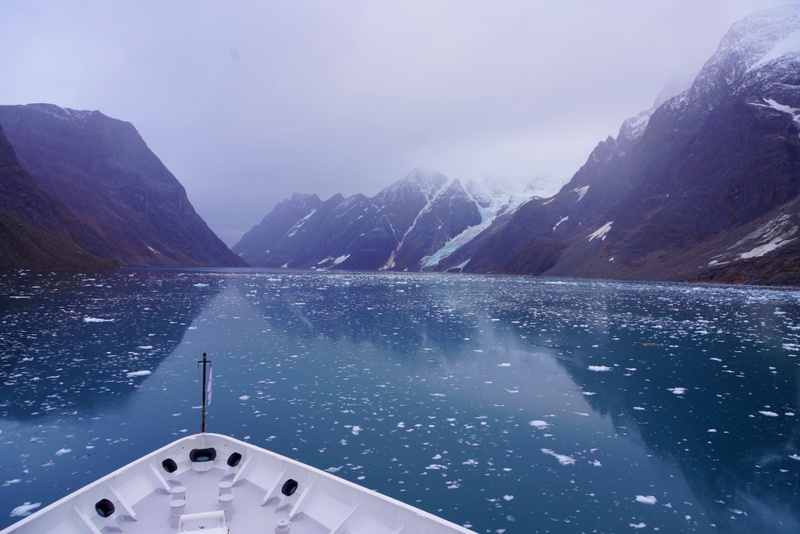
At 5 pm, I attended a talk ‘The Bells Fell Silent: The Disappearance of the Greenland Norse’ by Elisabeth.
Norse Settlement in Greenland
Greenland was settled by the Norse (the Viking) in the 10th century beginning with a voyage of Erik the Red from west Iceland in 985 AD. The Norse settlement was concentrated in two main areas: The Eastern settlement near the southern tip of Greenland and the Western settlement near Nuuk some 6-700 km to the north.
The Norse settlers lived by raising livestock and hunting. Walrus ivory was an important item for trading. Then between 1360 and 1460, these once thriving colonies vanished. The reason for the Norse departure remains a mystery.
The early theory suggests their disappearance was owing to the onset of the ‘Little Ice Age’. Recent research by scientists led by Nicolas Young at Columbia University suggests that Greenland was already cold when the Norse first arrived and such narrative of the Norse settlement in Greenland based on the climate does not stand.
Recent researches also show that hunger or sickness might unlikely have been a determining factor. More recent explanations offered include clashes with the Inuit population, soil erosion due to overgrazing and the effect of the Black Death resulting in agricultural lands left abandoned in Iceland and Scandinavia. As a result, some settlers were lured to return to their land of origin. It has also been suggested that socio-economic factors which related to the collapse of demand for walrus ivory (the most important export of the Norse settlement) might play a significant role. Furthermore, the younger generation might get fed up with a monotonous life at the edge of the world. It is most likely that the real reason for the disappearance of the Norse colonies in Greenland is a complex interplay of all these factors.
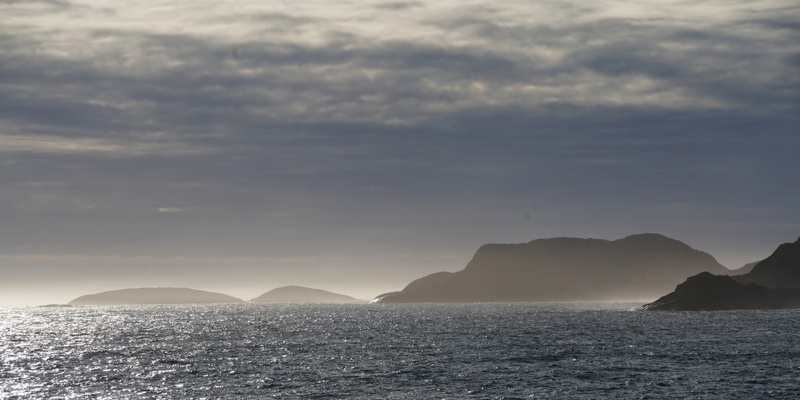
Day 6 Sept 25 Wednesday: Prince Christian Sound & Aappilatoq
After sailing 233 NM, we arrived at Prince Christian Sound in the morning. The weather was beautiful with clear blue sky and bright sunshine.
I got up early in the morning in order to watch the ship approaching the entrance of the sound. About 100km long, it connects the Denmark Strait with the Davis Strait. The sound which is stunning and narrow (sometimes only 500m wide), has been described as one of South Greenland’s most dramatic features. Many glaciers go straight into its water.
The weather was perfect: clear blue sky and without much wind. I stayed on deck after breakfast to watch the ship entering the sound and skimming through a glassy flat sea.
Captain Eric steered the ship right in front of the first glacier of the fjord. From this glacier, one can walk across to Nuuk. For half an hour, we were captivated by the spectacular landscape and unearthly beautiful scenery with perfect reflections.
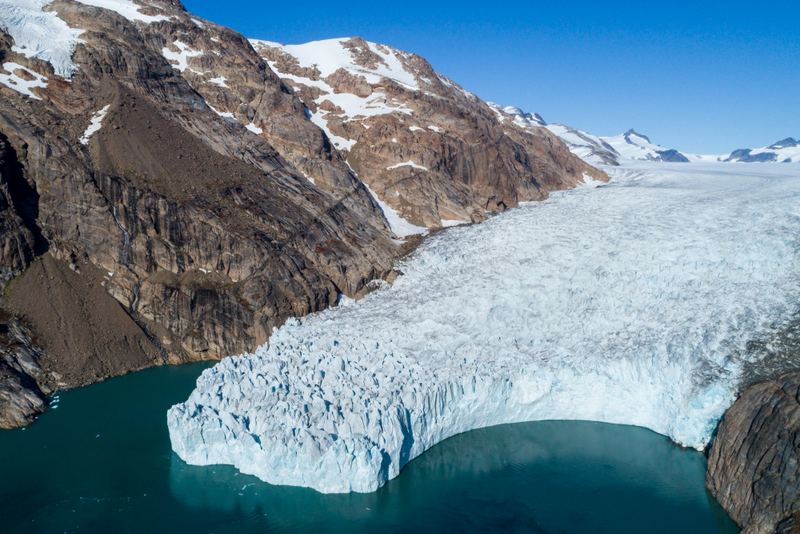
We were reluctant to leave. But we had to move on. We soon stopped at another small glacier. It is magnificent and impressive. But the ‘wow’ effect had gone.
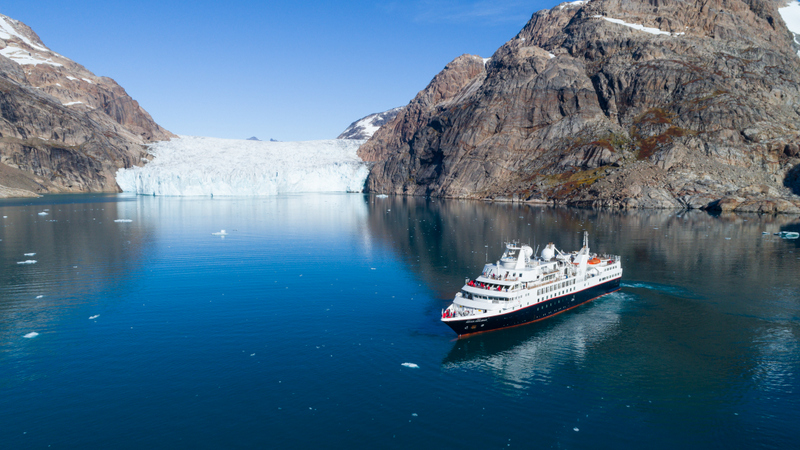
We sailed 41 NM from rince Christian Sound to Aappilatoq, a small settlement near the western end of Prince Christian Sound in southwestern Greenland Soon.
After lunch, we got off at a floating jetty at Aappilatoq. The settlement with 130 inhabitants hiding behind a prominent rock, have existed since the 19th century.
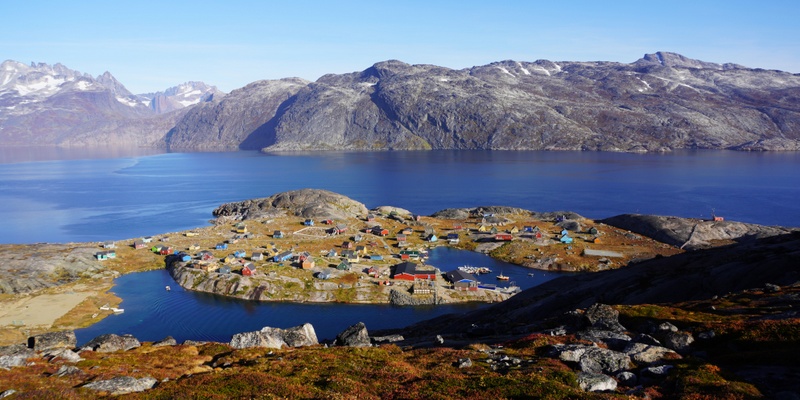
I joined a 3.5km-long scenic but strenuous hike to a dramatic rocky platform above the settlement. The uneven terrain was all covered with wild flowers, lichens and berries. I had my hiking poles and boots on. As usual I was trailing behind. Our guides were very good and always ready to lend me a hand. Wonderful!
When I reached the top, which is about 150m above the village, I had a fantastic panoramic view of the fjord, the bay and surrounding coastline, and the village with a picturesque church, a school, a football field, many houses and a graveyard.
The locals were singing at the church at 4 pm for us. But I was slow and did not get to the church in time. Luckily, the singing could be heard while I was over a kilometre away.
I had a leisure stroll for another 30 minutes before taking the last zodiac back to the ship at 5:30pm. I really enjoyed my first landing.
As usual I had a glass of champagne during the briefing. Today, I could also enjoy the splendid scenery from the lounge. I had a great day!
Day 7 Sept 26 Thursday: Hvalsey & Qaqortoq
Hvalsey at the end of the Hvalsey Fjord has the best-preserved Norse ruins in South Greenland, which is known as the “Eastern Settlement”. Today, the site has ruins of two stone great halls and houses. The farmstead here according to the Icelandic Book of Settlement, was established by Eric the Red’s uncle, Porkell Farserkur in the late 10th century. The church was built in the 14th century and had played an important part in Greenland’s Christianity. This place remained settled till 15th century.
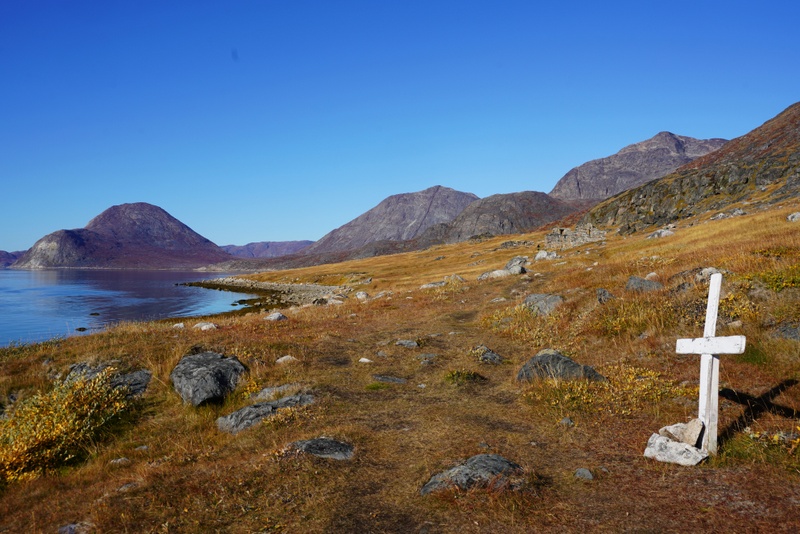
We went ashore in four groups. The first group disembarked at 8:30pm while my group did not leave till 9:30am. We could stay ashore till 11 am.
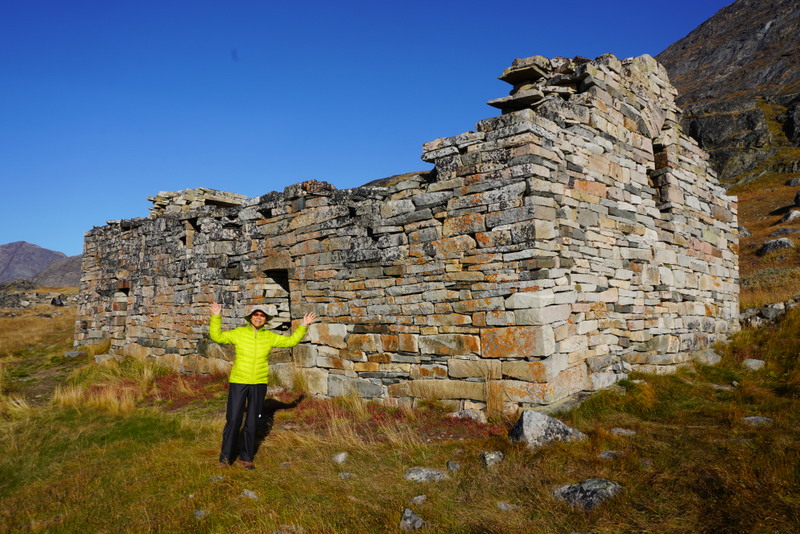
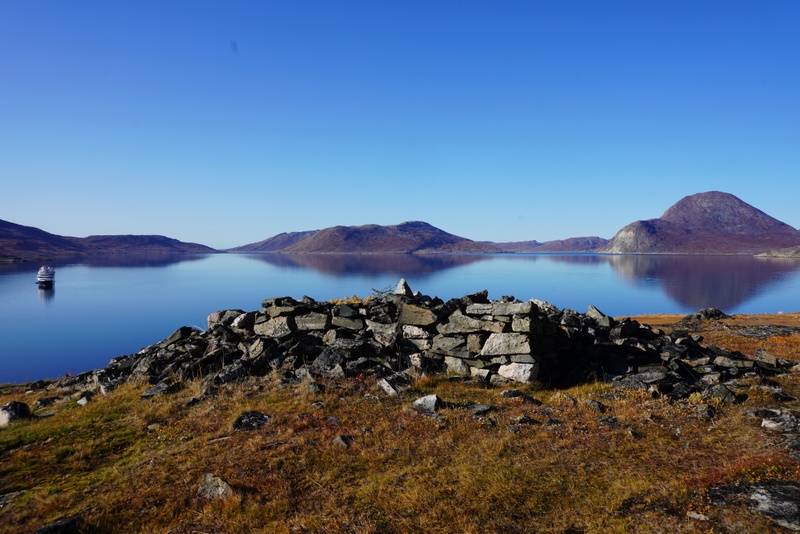
I had time to explore the ruins and walk at leisure on my own. It was sunny and warm with a blue sky and glassy sea. I enjoyed the tranquillity, fabulous weather and stunning scenery. What an unearthly beautiful spot!
From Aappilatoq to Qaqortoq is only 13 NM. Hence, we had two landings today. Shortly after lunch, the ship docked at Qaqortoq, the most populous town in southern Greenland and the fourth-largest town on the island with a population of about 3,000.
We spent over four hours here. I joined a long hike which would set off at 2 pm. As I had an early lunch, I was ready to disembark before 1:30pm. I therefore strolled on my own near the dock. I found in the town centre a cluster of picturesque 18th century colonial buildings and a landmark fountain. I also visited the fish market and an old church.
I had a pleasant a 6-km hike along the shore of Lake Tasersuaq. The weather was wonderful: warm and sunny. We stopped at an elevation of about 100m for panoramic views of the town, the lake and surrounding areas.
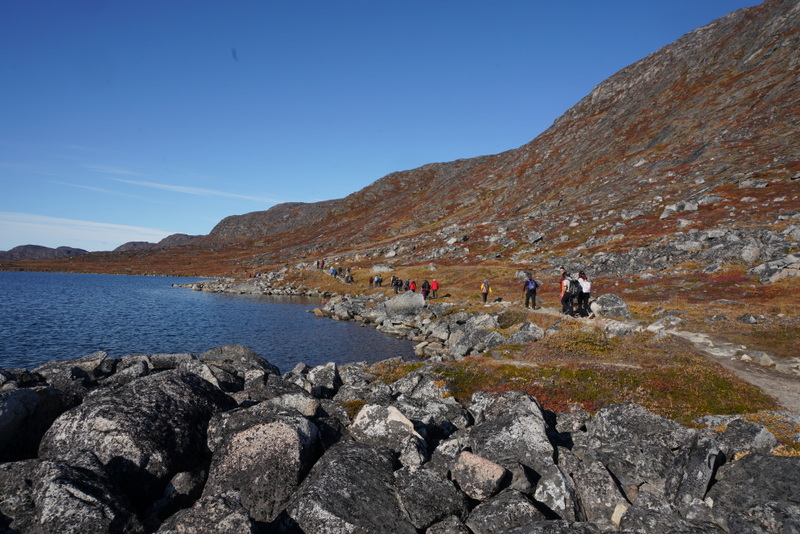
The autumn colours were beautiful. A few locals picking berries which would be an important vitamin C for them.
It was around 4:30 pm when we were back in town. Kylie and I strolled aimlessly in the town centre. We stopped at the local museum which features display about Greenlandic culture.
We found many stone carvings along the roadside by local artists. We followed the main road and soon reached the administrative centre where major government offices are located. There is a large supermarket which is well stocked.
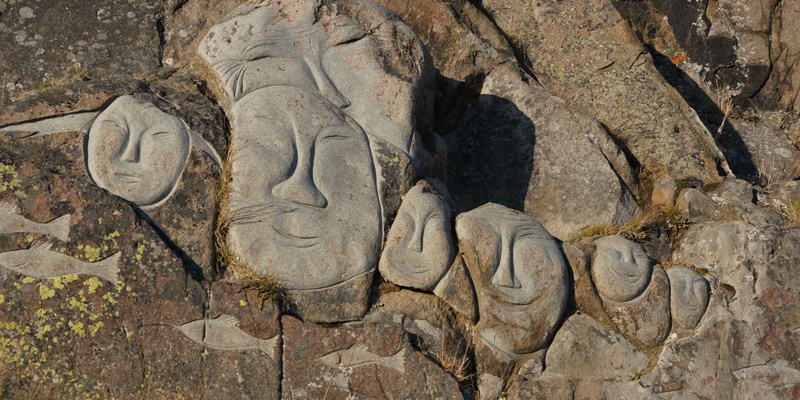
I saw a nice and modern home for the elderly and a large hospital. Given its size, this settlement has a full range of community and social facilities.
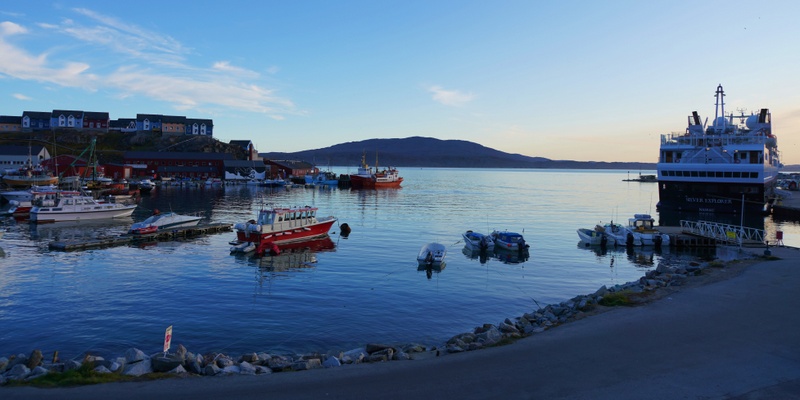
As we had been delayed for two days in Iceland, we could not sail to Nuuk, capital of Greenland as scheduled. At 6 pm, we waved good-bye to Greenland sailing west towards Iqaluit, Nunavut which is 704 NM away.

Day 8 & 9 Sept 27 & 28 At Sea
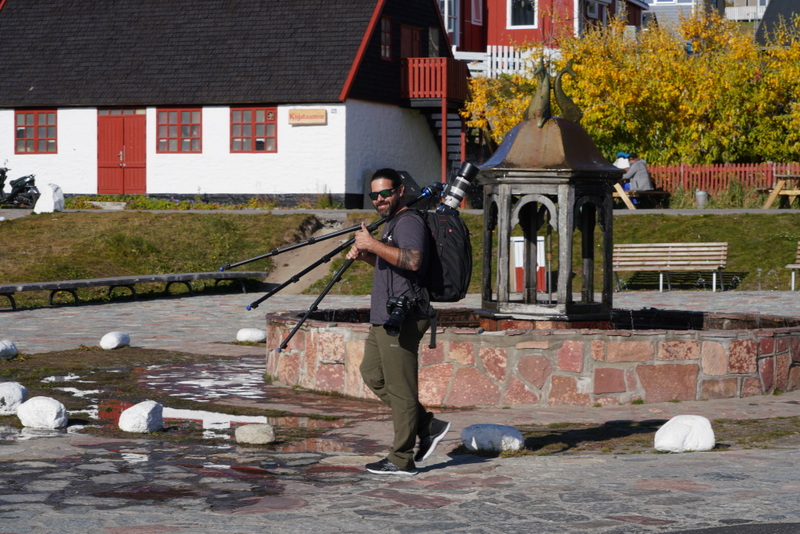
We had two uneventful leisure days at sea. The expedition team made sure we did not feel bored by offering five lectures in two days. I attended all the lectures.
- First day: ‘Discovering the Great North: Human Habitation in the Arctic’ talk by Elisabeth and ‘Introduction to Expedition Digital Photography ‘by the resident photographer Bruno
- Second day: ‘Great Whales of our Voyage’ by Uli; ‘The Icy Depths of Greenland and what it can tell us about Climate Change’ by Brent and ‘The Green stuff of Greenland: Botany of Greenland’ by HP.
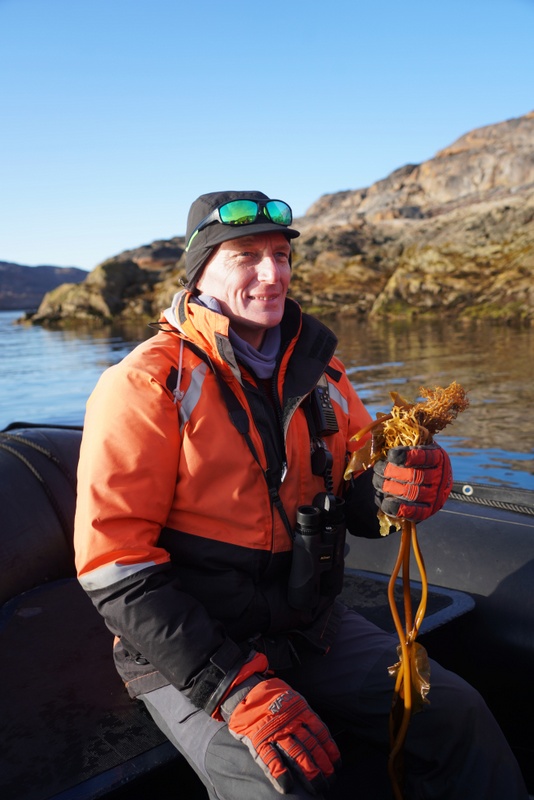
I am getting old and lazy. I had not taken any notes. Though I cannot remember the details, I always enjoy learning something new.
- Elisabeth’s talk has refreshed my memory about the Inuit settlements in Greenland that I had learnt from my last expedition to Western Greenland.
- Brent’s talk about climate change is daunting.
- I enjoy HP’s amusing talk about the botany of Greenland.
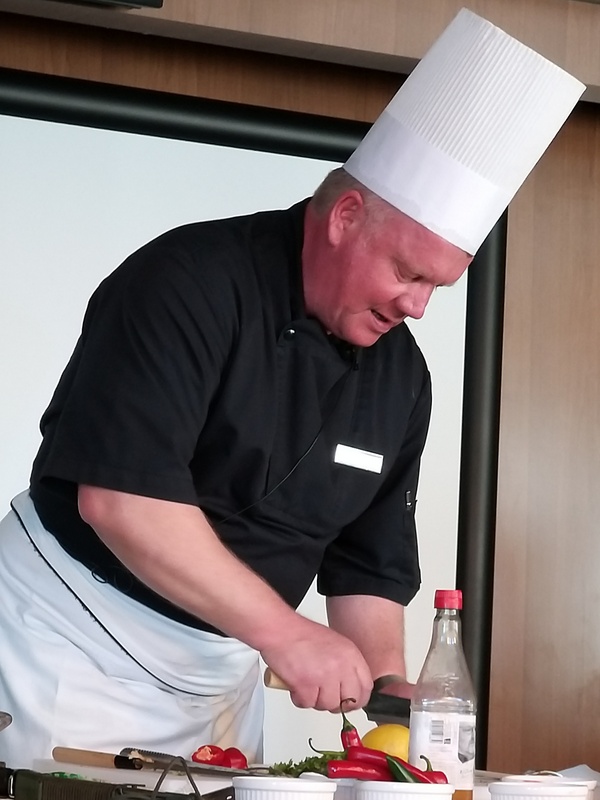
In addition, our amusing and entertaining Executive Chef Christian gave a cooking demonstration. He showed how he prepared salmon sashimi with an oriental flavour (soy sauce, miso) and plenty of herbs.
Life on Silver Explorer with good service is comfortable and easy. On average, I spend four-five hours drinking and dining (breakfast, lunch, tea and dinner etc). Two to five hours would be at the Explorer lounge attending briefing and lectures. On a sea day, I would exercise for 45 minutes a day before getting into the jacuzzi on Deck 6 for 15 minutes. I normally went before or after the briefing. I particularly enjoyed watching sunset from the hot tub. Massage is another nice but expensive option. Of course, I always tried to relax, sit down to write my travel notes and edit my photos.
